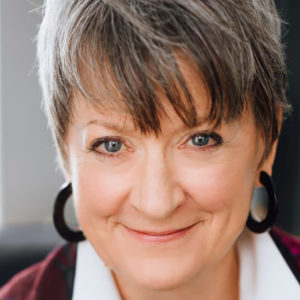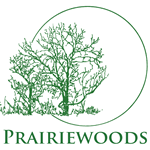 For the last year, Prairiewoods has been exploring six important principles that are central to an ecological spirituality. Principles that are supported by science as well as our own experience. We have talked about the Universe Story, transcending dualism, revisiting a sense of oneness, multi-disciplinary wisdom and moving from dominion to kinship. The sixth principles is this: diversity is the very heart of wholeness and wellbeing. Just as a rainbow of food creates a healthy body and an orchestra with many instruments creates beautiful music, a woodland full of diverse plant and animal life creates a thriving eco-system. Diversity is desirable, and diversity can create challenges. It is not optional; it simply exists. The goal is not simply to acknowledge diversity but instead to celebrate it, cultivate it and find solidarity in it.
For the last year, Prairiewoods has been exploring six important principles that are central to an ecological spirituality. Principles that are supported by science as well as our own experience. We have talked about the Universe Story, transcending dualism, revisiting a sense of oneness, multi-disciplinary wisdom and moving from dominion to kinship. The sixth principles is this: diversity is the very heart of wholeness and wellbeing. Just as a rainbow of food creates a healthy body and an orchestra with many instruments creates beautiful music, a woodland full of diverse plant and animal life creates a thriving eco-system. Diversity is desirable, and diversity can create challenges. It is not optional; it simply exists. The goal is not simply to acknowledge diversity but instead to celebrate it, cultivate it and find solidarity in it.
“‘Unity in diversity’ describes a state of togetherness or harmony achieved while acknowledging and valuing individual differences, encompassing a range of cultures, beliefs and backgrounds.”
—Wikipedia
We are part of one whole, connected to each other and to all the rest of creation. We can find this place of grace called unity in diversity when we remember what Thomas Berry has written:
“The deep Mystery of the Divine is revealed in every being, but in a supreme manner within the comprehensive unity of the whole.”
How shall we live into this truth?
First, let’s widen our lens. Often when we speak about diversity we are really speaking about race or gender identity. But let’s consider all the ways that we experience diversity. Each of us brings a unique constellation of characteristics and identities. This creates innumerable opportunities to connect and build relationships. Yet the data shows that we are increasingly isolated into one-dimensional bubbles. Couple that with our American myth of the heroic individual and we have created the recipe for isolation and fear.
How do we contribute to disunity?
When we experience the unknown and the uncertain, we often experience fear. When we are afraid, we seek safety—in the known and predictable. In times like these when so much seems unpredictable, it is easy to stay with the comfortable—the people we know, the places we know, the stories we have always heard.
When we reject the value of diversity we begin to identify those who are “other than us” as separate, often less valuable or important than we are. We create the binary universe of us and them. As my new friend Rector John Greve stated so clearly the other day— “When it is ‘them,’ we make laws and rules. When it is ‘us,’ we find solutions.”
How shall we foster unity?
First, let’s grow our capacity for the binding agents of love and compassion. Let us actively see points of connection through shared experience and shared concerns. Then build our resilience so that we are able to live into the tension that is inherent in diverse communities.
Be curious and seek to explore. Recognize that all identities and how we view them are socially constructed. They are often built on stories, generalizations and stereotypes. We (and most often the dominant group) define the value of an identity. Is it desirable or do we attach a stigma? Do we use it to create boundaries and walls? Instead, recognize the value of mutuality and reciprocity as an antidote to fear.
Do this … choose to wonder, listen to a story, build a bridge, practice loving kindness.
Here are four possibilities to consider:
- john a. powell encourages us to:
“Extend our attention and build connections across boundaries of difference. The heart of bridging is to listen to and learn from and about the person perceived as different or even as ‘the other.’ Hear their story not to confirm their facts or perspective but to affirm their humanity. Centering stories and narratives and widening our circle of concern. You don’t need to give up your identity. Increasing empathy, compassion and common ground erases lines drawn between groups on the basis of fear.”
- Valerie Kaur, a Sikh civil right activist, encourages us:
“Seeing no stranger begins in wonder. It is to look upon the face of anyone and choose to say: You are a part of me I do not yet know. Wonder is the wellspring for love. Who we wonder about determines whose stories we hear and whose joy and pain we share … When a critical mass of people come together to wonder about one another, grieve with one another, and fight with and for one another, we begin to build the solidarity needed for collective liberation and transformation—a solidarity rooted in love.”
Engage in deep listening
- David Brooks, in his book How to Know a Person, encourages us to “have persistent curiosity about others … and have an explorer’s heart.” This practice of deep listening, including asking better questions will lead to deeper, richer relationship possibilities. If you are stuck when it comes to thinking up questions, try some of the questions the National Public Housing Museum included in their 36 Questions for Civic Love project (nphm.org/wp-content/uploads/2024/05/CivicLove_Toolkit_English.pdf).
- Engage in a LovingKindness Meditation, and each day widen the circle of those you include. (Practice this beautiful ancient meditation at youtu.be/sz7cpV7ERsM?si=65gJNYOqDTB1hyhA)
It can be easy to feel overwhelmed. To feel that the space between us is too wide to cross. Begin with one action, collaborate with others. You are not alone and you need not struggle alone. Perhaps you are one question away from a greater unity in diversity.
—Leslie Wright, Prairiewoods director


